Eurail Passes are famous as a way to save money while exploring Europe, but they are also confusing and often misunderstood. They are still an amazing money-saving tool for certain types of travelers, and not a wise idea for most others. Before Europe introduced dynamic rail pricing (like airfares, where the price varies depending on when you buy it), a Eurail Pass was an easy way to save money since all tickets had fixed prices that were generally fairly expensive. These days most travelers can save far more money just by buying their train tickets at least a few weeks in advance.
That said, Eurail Passes are still great for longer trips and especially for people who like to make plans as they go. Dynamic rail pricing made advanced tickets much cheaper, but it also made last-minute tickets MUCH more expensive. Below we will discuss Eurail Passes and whether they are a good idea for your trip or not.
Disclosure: This is a reader-supported website and some of the links are affiliate links where a small commission is paid to help keep this site going.
Note: This article was written in 2012 and has been continuously updated since then, so all information is current as of April, 2024.
Eurail 2024 changes: New countries and a mobile version

Aside from that it’s just the normal fact that they have updated the timetables as of December 2023 and have a few promotions going on, but those usually don’t happen over the busy summer season.
Eurail passes are now available in a mobile version
Until very recently, Eurail Passes were only available in paper form and they were quite confusing at first. You’d get a pass with a series of empty boxes on it and you’d need to enter your trip before you’d use your pass each day and then have the first conductor verify it. If you lost your ticket (and this was not uncommon), it was a whole ordeal to attempt to get a replacement.
Again in 2024 Eurail offers a fully mobile version that is delivered instantly to your mobile device with no delivery fee. And if you somehow lose your phone, you can resume using your Pass on your replacement with no extra headache. This is MUCH more convenient in every way and as long as you can keep track of your phone you’ll always have your train pass handy.
If your trip will be 2 weeks or less, a Eurail Pass probably won't be worth it
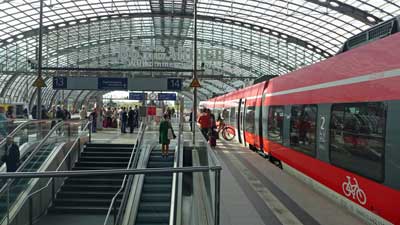
Eurail Passes are ideal for travelers on longer trips, and especially those who don’t want to plan all of their destinations and dates far in advance. If you have your itinerary pretty much planned out and you don’t require much flexibility, you’ll be far better off just locking in your dates and buying your train tickets as early as you can. Again, they can be surprisingly cheap if you buy 2 to 4 months out.
If you are age 27 or younger, a Eurail Pass is probably worth it

With this in mind, if you are lucky enough to still be 27 or younger, you should seriously think about getting a Eurail Global Pass Youth, partly because the sense of freedom instantly gets more expensive at age 28. The age cutoff was 25 until recently, so this change is a great deal for anyone who will be 26 or 27 at the start of their trip.
You aren’t guaranteed to save money by buying a Youth Eurail Pass, but chances are good that you WILL save money and you’ll definitely save a lot of hassle as well. Especially now that Eurail Passes come in a mobile form, it’s even that much more convenient to just hop aboard any train that is about to leave the station and not worry about buying or even having a ticket. Especially for young people, it can be really fun and exhilarating to literally just walk into a train station with your backpack and look at the departure board and then decide where to go at that moment.
If you are age 60 or over, a Eurail Pass could also be great value
Another fairly recent change is that anyone who is 60 years or older at the start of the use of a Eurail Pass now gets 10% off the normal adult fare. That new discount is going to make this a great value for many travelers who might have been on the fence about buying a full-price pass before.
>>>Check prices on Eurail Passes
If you are planning on traveling in 1st Class anyway, a Eurail Pass is probably worth it
Most 2nd Class trains provide similar comfort and legroom to Business Class airline seats, or at least close enough, so for most people it’s not worth the added expense for 1st Class. However, if you are rich or elderly or fear contact with strangers, a 1st Class Eurail Pass is probably worth it no matter what.
Not only do you get much more comfort and legroom in 1st Class, with only 3 seats across instead of 4, but there is another advantage to 1st Class on European trains. Since it’s mostly business travelers and wealthy people traveling in 1st Class, the carriages are almost always mostly empty except in the mornings and late afternoons between large cities. In 2nd Class the only available seats might be two seats in an 8-seat cabin with all the other seats taken up by a loud family or a group of rowdy friends. In 1st Class you are all but guaranteed a peaceful ride, and usually plenty of empty seats from which to choose.
A hidden Eurail Pass benefit: Making extra stops on travel days for free

Brussels in particular is one I recommend a short stop in because the small historic center around what they called the Grand Place is amazing and gorgeous, while the rest of the city is rather boring by European standards. With a Eurail Pass you can jump off the train in Brussels and explore the city center for a few hours (luggage storage is cheap and easy) and maybe have lunch, and then hop on a later train to complete your journey to Amsterdam. There are opportunities like this on many if not most trips between larger cities, and if you buy the point-to-point tickets you have to stay on the train you booked.
Another example is the high-speed train between Barcelona and Madrid, which takes about 2.5 to 3 hours in each direction. There are some interesting cities in between, but in this case you could take a morning train from Barcelona to Madrid and then check into your accommodation, and then hop on another train from Madrid to Toledo, which takes about 30 minutes and costs €14 each way. Toledo is a historic and fascinating town, but it’s also pretty small and you can explore the main sights in an afternoon. With a Flexi Eurail Pass where you buy a certain number of travel days, you can save more money by adding on these sorts of nearby stops on travel days.
If you'll be touring major cities within ONE country, a single-country pass might be perfect, and Second Class passes are available for all ages
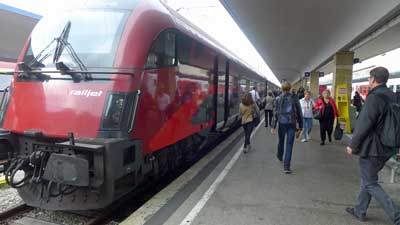
Single-country passes are still available and they MIGHT be good value for you, but it depends on which country and how much traveling you’ll be doing. If you plan on going all over a larger country such as Germany, France, or Spain, and especially if you like to make plans as you go, a Single-country pass for one of those might be your best deal. On the other hand, smaller countries (such as the Netherlands) or countries where train tickets are already fairly cheap (such as Italy) might be harder to get value out of. Long story short, for single-country passes you really need to check fares of the places you plan on going and see how they add up compared to the pass.
>>>Check prices for Single Country Passes
Eurostar (between London and Paris or Brussels or Amsterdam) tickets are now included for Eurail Pass holders for a €30 reservation fee
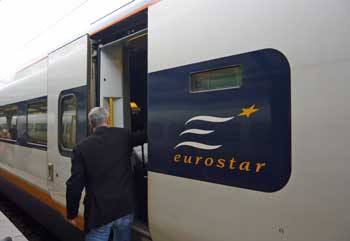
Our recent tests show that Eurostar fares one-way from London to Paris can be as low as €49 if you book about 3 months out, or as expensive as €214 for the same seat if you wait until the day of travel to buy. Round-trip/return tickets can be even cheaper if there is a promotion running.
>>>Check Eurostar prices
If you are on a really low budget, a Eurail Pass isn't a good idea
Here’s the thing. As we’ll discuss below, there are many potential benefits to Eurail Passes, and they will often save you money, but they do cost a lot and they only really save you money when traveling in the more expensive countries.
So let’s say you have a flight to Rome and then US$2,000 to last you a month after you arrive. Buying a Eurail Pass before you go would help you see a lot in that month, but you’d practically need to sleep in parks for your funds to last the whole time. You’d be better off moving slowly in the southern countries, or just in Italy itself, as a way to have the best holiday on your budget. You might also be tempted to use a Eurail Pass mostly on night trains so you can save the cost of a hotel or hostel, but those aren’t ideal for most of us.
The cheapest way to get around Europe by rail is to buy all train tickets online at least a couple months in advance. The fares are low, but they are non-refundable and non-changeable. See how far in advance you should buy train tickets to get those attractive fares.
If more than a little of your travel will be in eastern Europe, a Eurail Pass isn't a good idea
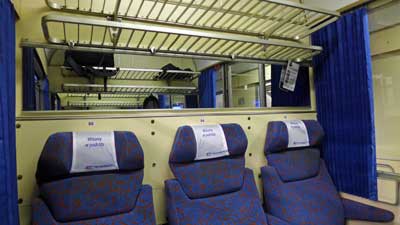
The good news is that the trains operating in this region, and the buses that operate alongside and/or where trains aren’t running, are quite cheap. So if any significant part of your trip will be into this region, a rail pass doesn’t make sense.
Basic types of Eurail Passes
Long gone are the days of the simple options, replaced by specialized passes that are meant to appeal to different styles. It should be pretty easy to figure out which is best for you, and then keep going down the page to decide if it’s worth it at all.
Eurail Global Pass – 4,5, or 7 days within 1 month or 10 days within 2 months
Until recently the minimum number of travel days with 10 days within 2 months, but now you can buy as few as 4 days within 1 month for about €200 to €250 (for first class). This can actually be an interesting strategy if you are planning many shorter and cheaper trips (like within Italy or Eastern Europe), and also 4 or 5 longer trips such as Berlin to Amsterdam. This way you can buy only 4 or 5 travel days and only use them for your most expensive travel days, and just pay as you go or buy cheap advance tickets for your other journeys.
Eurail Global Pass – 15 to 90 consecutive days
This variation allows for unlimited travel on the system for between 15 and 90 total days. They are really only a good idea for people who are certain they are going to travel very often, with much of it being in the north of Europe. The problem with them is that if you really try to get your money’s worth, you will probably ruin your trip by spending too much time on trains in general. On the other hand, if you will be in Europe for 2 or 3 months and plan on traveling around a lot, you can get a LOT of use out of a longer pass. The 3-month pass is around €900 so it’s literally about €10 per day. Imagine going back and forth between Berlin and Munich or Barcelona and Madrid for €10 per day!
One Country Pass
Obviously these are for travel within one country only. Again, they can be great deals if you plan on extensively moving around one particular country.
Where to buy your Eurail Pass
Eurail Passes are cheapest and easiest to buy online, primarily from two main sources which offer all the same products at the exact same prices:
This is a reliable company based in the Netherlands but with fulfillment offices in the US and Ireland. Price of Travel is a partner with this company, and if you use the links of this site we earn a small commission to help keep this site online. Eurail.com is usually cheaper than RailEurope (discussed below) by the way.
They were founded in the 1930s and are based in New York, but owned primarily by the French and Swiss rail companies. They offer free shipping (2 to 3 business days) on all orders of US$399 or more, although now that a mobile version is available, this is meaningless. Price of Travel is a partner with this company, and if you use the links of this site we earn a small commission to help keep this site online.
Reservations on European trains for rail pass holders
For most of the fastest trains between major cities you’ll need to reserve a seat even with a rail pass. It can usually be done just before you leave and the cost is usually around €5. Here’s a full list of which European trains require reservations and which don’t.
Reservations are required on all intercity (longer distance) trains in or involving France, Spain, Switzerland, and Italy. For most trains in Germany, Austria, Netherlands, Belgium, and most of eastern Europe, you can usually find trains that don’t require seat reservations. Often, if you don’t leave until after 9:30am or so, you can ride on any train with no seat reservation, but you have to research each leg to be sure.
How to determine which trains require seat reservations, and also get schedules
You can click on the link just above this section for a list of countries and their seat-reservation policies, but in some cases it’s actually a bit more complicated than that. For example, you can generally ride without a seat reservation on fast ICE (Inter City Express) trains in Germany if you depart after 09:30 in the morning. They do this to free up seats for business travelers who pay full fare, and they don’t mind filling up seats with rail pass holders on trains leaving a bit later.
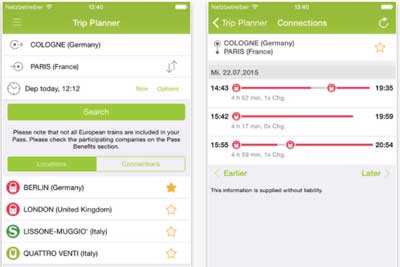
Night trains in Europe are making a comeback
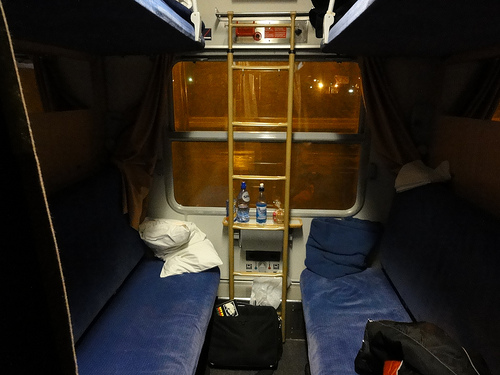
Fast forward to 2024 and night trains are not only expanding service, but they are very trendy. Some of it is nostalgia for the older way of getting around, but most of it is for environmental purposes combined with European hatred for the “low cost airline” experience with RyanAir and Easy Jet etc.
Personally I’m still not a fan of night trains because I find it difficult to sleep on them since they often get decoupled at interim stations in the middle of the night and then coupled onto other trains coming from other places, and I can’t sleep through any of that. But still, they are worth looking into and they are fun to try at least once.
A bit of warning that they tend not to be cheap and even if you have a Eurail Pass you’ll almost certainly want to book a sleeping cabin with a bunk or couchette, and that will come at an extra fee. On the other hand, if you are the sort of person who can sleep sitting upright in a normal seat, then that won’t cost any extra on most overnight trains.
Factors to consider when thinking about any Eurail Pass
Assuming you know which Eurail Saver Pass option is the best one for your type of trip by now, we’ll go over the main factors that should help you decide whether it’s the best idea for you.
Eurail Passes are best for standard ‘medium length’ journeys

However, if you are determined to travel between Rome and Paris, it’s about a 14-hour journey that will almost certainly be overnight. In this case, a cheap plane ticket is probably better, although taking shorter hops on the train is even better, so spend a day or two in Milan or Lyon on the way instead.
And of course, if you prefer to stop in various small towns between the big ones, then a Eurail Pass won’t pay off, except for the traditional kind for unlimited travel in a given period.
Eurail Passes are better value in northern Europe, France, and Spain, and poor value in Italy
Once you do a bit of research you’ll quickly learn that train tickets (and almost everything else) are much more expensive in Germany, Netherlands, Denmark, Sweden, Norway, and Finland than they are in Greece, Italy, Portugal, and Spain. With this in mind, the regional passes can make sense if you are spending time in the south, but the Global Passes almost certainly won’t. Train tickets in Spain used to be fairly cheap, but in recent years they’ve added new high-speed trains between the major cities, and these are quite expensive.
Unlike most other countries, Italy really subsidizes its train tickets so they are quite reasonable even on travel day, and very cheap if you buy a month or more in advance. For example, you can go between Rome and Florence for around €49 if you buy on travel day, and as little as €19 if you buy well in advance. In most other countries, fares are double or triple that much for similar rides.
So consider your planned itinerary. If more than half of it is in the Mediterranean countries then look into a Regional Pass or just buy tickets as you go, because they tend to be pretty cheap. But if you are planning on spending at least half your time in Paris and places to the north of it, then a Eurail Pass is probably a money saver because those tickets are expensive.
Trains are almost always better than planes
Flying sucks, even in Europe
Until you’ve experienced the joy of traveling around Europe by train you might be tempted to “maximize” your time by flying low-cost airlines between each city. This would be a mistake. In order to get truly cheap airfares you have to purchase long in advance, buying non-refundable tickets. You might also have to commit to flights in the very early morning or in the late evening, because cheap tickets on convenient flights sell out quickly.
And again, most European airports are around an hour outside of the city. They are often on the main train lines, which helps, but still you have to deal with the madness of security and also try to get there at least two hours early. From one city center to any other city center it’s about 5 hours minimum, even if they are close, and those are pretty miserable hours.
Train travel is a positive experience

Not only are all the seats comfortable on trains, but you also have an interesting view most of the time. Better still, trains deposit you in the heart of every city, which is usually the neighborhood with the cheapest hotels and food. It’s a wonderful feeling to step off a relaxing train ride, buy a hot dog or sandwich at a local shop, and then be in your hotel room only about 10 minutes later.
Eurail Passes are better than train tickets alone
As someone who enjoys the process of crunching numbers and looking for value, I have to also mention that I’d buy a Eurail Pass even if it seemed like it would cost a bit more than the individual tickets. With a pass you get an extra element of freedom that is worth a lot more than you might expect until you’ve used one.

Let’s say you are heading from Amsterdam to Hamburg tomorrow morning. The 09:00 train you planned for might seem a bit ambitious after a long night out, so you can instead opt for the 10:00 or 11:00 train. As long as you walk into Centraal Station 10 or so minutes before departure, you are on. If you are flying you can’t change your ticket, and if you are buying train tickets as you go you have to be in line at the international desk at the train station at least 30 minutes early, and even then you might miss it if they are busy.
Freedom and getting to feel like a big shot
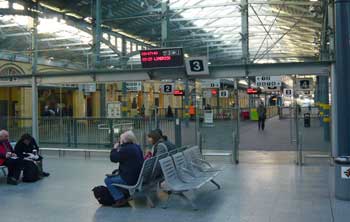
Let’s say you are staying at a hostel in Brussels, and two groups of new friends suggest that you go along with them to their next stops. One group is going to Bruges, which is a short and cheap journey, so you can join them by buying individual tickets (unless you have the unlimited pass, making it free). Then you restart your trip from Bruges, on to your next destination. The other group is headed to Berlin on a night train, which is long and expensive, but with a Eurail Pass you don’t even have to think about the cost. On you go, just like a rich person.
Buying a Eurail Pass is great for those who might run out of money
We all know people who keep meticulous track of every penny they spend, and who are always putting money away for a rainy day. And we all know people who can take a US$100 “entertainment fund” and burn through almost all of it in just a few hours. For the first type of person, a Eurail Pass can help you keep track of expenses, but it’s really the second type of person these are best for.
It’s sad to hear about people who have big plans to see their dream destinations, but they run out of money for transportation halfway into the trip, so they have to just stay put until they fly home. It happens. Locking in your major transportation costs before you leave home, and probably saving money in the process, is a wise move for anyone who isn’t as disciplined as they’d like with their money.
>>>Check prices on Eurail Passes
Bottom line: If you want to keep travel costs down, your choices will usually be a Eurail Pass or buying tickets at least a month or more early
In the last few years, almost every long-distance train ride in Europe has switched to a pricing system similar to low-cost airlines. In other words, tickets go on sale 2 to 6 months ahead of time at very low prices, and they keep getting more expensive as the train fills up and the date approaches. For most trips where a rail pass is possible, this is how things stack up:
Cheapest possible way: Buy advanced (non-refundable, non-changeable) train tickets at least 30 days in advance
Next cheapest way: Buy a Eurail Pass and make seat reservations as you go, usually only a day or less in advance.
Most expensive way: Buy train tickets as you go, or less than a week in advance.
Thinking about it this way should make the choice a bit easier. If you are the type who likes to plan each day and travel segment long before you even leave home, then buy tickets online for the best prices. This can be the best strategy for most shorter trips (10 days or less) because you simply don’t have enough time to change many things as you go anyway.
Buying a Eurail Pass won’t be quite as cheap, but you are buying a LOT of flexibility with the extra money. If you dream of making up your plans as you go, or even making up your plans just a few days in advance, this is almost always your best bet.
But if you wait too long, and just show up looking to buy train tickets as you go, they are going to cost a fortune. As recently as only a few years ago all seats would be the same price on many rail systems, so you could always just wing it. When each country computerized its rail systems so they can sell advanced tickets cheaper, they also had to keep track of seat reservations, so the whole pricing structure had changed to favor advanced ticket buyers and rail pass holders over those who’d prefer to just hop on any train as it is leaving the station.
Have a rail pass or itinerary question of your own?
It wasn’t planned but scores of people began asking me rail pass and itinerary questions at the bottom of this article and a few others. I’m happy to keep answering them and now I’m trying to organize them better as well so they are easier for other people to find.
If you have a question about specific types of European rail passes, please ask it in the comments below.
But if you have a question more about a European itinerary or other non-rail-pass questions, please click over to the European itineraries Q & A article and ask in the comments of that one.

Hi Roger
I am planning to travel through Eastern Europe around early Aug. I have the following places in mind. Can you please suggest if I should add (or remove) some towns in these countries and also comment on the number of days that I have budgeted for each of them? Also if you have written any articles in relation to travelling through these countries, kindly share the same. Thanks in advance.
Tallinn: 2 days
Riga: 3 days
Vilnius: 3 days
Warsaw: 2 days
Krakow: 3 days
Budapest: 4 days
Bratislava: 2 days
Vienna: 3 days
Ljubljana: 2 days
Cheers,
Neo
Neo,
It’s refreshing to see someone going through the Baltics and Poland like this. Almost every question I get involves Italy and France, so this is a fun change.
I think your itinerary looks nearly perfect and I think you nailed it on the number of days in each place as well. Tallinn, Riga, and Vilnius are all about the same size and you can see all the main sights in 3 nights, or even 2. I prefer Vilnius of the 3 because the others are cruise ports and that leads to some cheesy shops and restaurants clustered along the main walkways for cruise passengers. Warsaw is interesting, but it’s really only the sliver of the restored Old Town that is worth spending time in, and 2 nights should be good.
I love Krakow and 3 nights should be good. Budapest is larger so 4 nights should work. Personally, I think Bratislava is a bit of a dud and I’m not sure I’d stop there at all. It’s almost walking distance from Vienna, which is a far more interesting city. So if I were you I’d put that one in the Maybe pile. I mean, it’s got a nice historic center and a pleasant location on a river, but it’s pretty generic compared to many others on your list.
Ljubljana is a cool little city as well. Two days should be enough to hit the highlights. Since you wrote this on my Eurail article I should just mention that you’ll still be getting between most of these cities on long-distance buses instead of trains. Even where trains are possible, such as Warsaw to Krakow, the buses are usually cheaper and just as fast with more departures each day. The buses usually have wifi as well.
I don’t really have any articles about traveling in this area myself, unless you count the page for each city such as this one for Krakow and for Budapest. I hope this helps and let me know if you have any other questions. -Roger
Hi Roger,
Thanks for the incredible tips, this article is truly amazing. I am a U.S. 20 year old student studying abroad in Prague for the months of September through half of December and I am trying to decide between purchasing the global Euro Pass, getting individual train tickets and buying plane tickets in advance. I don’t have a rock solid schedule, but I know I am going to Oktoberfest in Munich in late September and Amsterdam in mid October. I am planning on getting to Florence and Vienna as well and potentially Athens, Budapest and Barcelona. We would be going to most of these places for about 3 nights and any recommendations about which of these places would be most worthwhile from where we are would be great. Thank You in advance for your help and have a great time traveling wherever you go
Leo,
It’s my pleasure to try to help. If you are figuring out the cheapest and/or most efficient way to do stops around Europe while based in Prague, I don’t think a Eurail Pass would work well for you. One unfortunate fact is that the trains in Czechia are still quite slow compared to those in Germany and France etc. So it still takes 4 to 5 hours to just reach Berlin, Vienna, or Munich from there. And then it takes a few hours or more to get anywhere else interesting from those hubs. Amsterdam is 10 hours 20 minutes from Prague by train, and since it’s almost all flat, the scenery is pretty boring.
When you get to Prague you’ll discover that for many of the shorter road trips you might want to do such as Cesky Krumlov or Pilsen, that buses are the better choice because they are just as fast, usually have wifi, and have many more daily departures.
And when it comes to farther places like Amsterdam or Barcelona, you’ll find that flights are pretty cheap if you book at least a few weeks in advance. For some places you should also check the advance train fares because they can be cheap if bought far enough in advance as well.
Prague is so cool that you won’t need to travel much to have a great time, but definitely hit Berlin early because you’ll probably want to go back. And Krakow is very cool as well, and very cheap. You can do Cesky Krumlov as a day trip (3 hours each way), but stay at least one night because it’s very cool. Let me know if you have any other questions. -Roger
Hi Roger.
Kudos for all the advice and time taken to help everyone out with all the questions!!
Will be travelling to Eur for all of Sept and can’t seem to work out if the Eurail would be good for me or not (and itinerary).
Not terribly set no any schedule.
Amsterdam – 2 nights
Brussels – 5 or so hour stop over if the train allows
Paris – 3 nights
Nantes – 2 nights
Paris – ? nights
Possibly could change this out to a sneaky trip down to Barcelona for a few nights
Vague interlude on getting to Venice somehow (thinking through Switzerland and the alpine rail if via Paris or coastline if from Barcelona)
Bologna – 3 nights
Florence – 1 night
Rome – 5 nights
Basically the only things that are definite are Amsterdam-Paris-Nantes-Bologna-Rome.
Would any of the Eurail passes suit and would you put something in this pencilled itinerary or throw anything out?
Over 28 while travelling and not wanting to have to
stick to a schedule apart from Nantes and Bologna (visiting friends)
Ronnie,
The bad news is that there isn’t a rail pass that would be good value for you, but the good news is that it’s mostly because many of your train rides will be short and fairly cheap on their own. There is also the unfortunate complication in France where the popular high-speed trains come with seat reservation fees that can be €35 each. If you book a ticket a month in advance for the same train the whole thing including the seat reservation might only be, say, €80. In other words, Eurail Passes don’t help as much in France as they do elsewhere.
The train tickets within Italy are fairly cheap if you buy at the last minute, and even cheaper if you can buy at least a few days or more in advance. Check the fares now on the official Italy rail website. You should be able to go between those major cities for €50 or probably less, even without much notice. The per-day cost for Eurail Passes tends to be quite a bit higher than that, especially for those of us over 25.
Another thing I suggest you check for your possible destinations is the price of tickets in the coming few days from now. Generally how it works is that the price of train tickets goes up as more seat are sold on each train. So the most popular departure times start to get more expensive, but the less popular departures can still be reasonable. The early-morning (8am or so) departures on trains between big cities are most popular because those are mostly business people. So a 8:00 departure might be €95 the day before it goes, but the 11am departure might still be €48. In other words, if you are more flexible with your travel times you can often still get decent train fares even with little notice.
Personally, I like to make my outbound reservation when I arrive in a city, which is usually 3 days out. In those cases you can typically get good deals if you are willing to travel on a non-peak departure, unless it’s a holiday or a Monday morning or Friday afternoon. I hope this helps. Let me know if you have any other questions. -Roger
Hi Roger!
What an epic, informative site you’ve treated us all to! Thanks!
My girlfriend and I (23 and 24 years old) are planning our Europe trip. We plan on continuously travelling for 2-2.5 months doing more AirBnB than hostel backpacking. We’ll be covering around 10 different countries (Italy, France, Germany, Netherlands, Belgium, Austria, Spain, Portugal, Czech Republic) and wanted a second opinion on the Eurail Global Pass.
Because we are classified as “Youth” travellers, being under 25 years old, the 2 month continuous Global Pass seems much more efficient than any Flexi-Pass. We’ll be hopping cities every few days so having the freedom of jumping on any train without problems seems like a really good, stress-free option.
So just a couple quick questions:
Does the Global Pass cover shorter train rides when we look to do local day trips out of major cities?
We will also look to do a couple of longer train trips (Naples-Palermo, Paris-Barcelona, Madrid-Lisbon). Are we able to use the Global Pass for these trips? Will there be any additional costs involved?
Lastly, we’ll be taking all the precautions to keep our important documents safe (under clothing pouches/belts etc), however do you recommend purchasing the Pass Protection Plan?
We are new to Europe so plan on sightseeing as much as possible in that 2 months while on a budget! If the Global Pass can cover all train transport, both day-trips and longer 8hr trips, then we will definitely get them!
Thanks a bunch, any advice is much appreciated!
-Ari
Ari,
This sounds like a wonderful trip. Yes, a Eurail Pass of any kind covers almost all local and suburban trains on valid days, but not local public transport such as metros and buses. Some exceptions are some of the mountain trains in Switzerland and a few private lines such as the one from Naples to Sorrento.
You can use the Global Pass on all of those long train rides. The only additional costs are seat or bunk reservations, which are necessary in some places but not others. You need a seat reservation on high-speed trains in Italy, France, and Spain, plus most international trains. They are around €5 each in most places, except they can be as high as €30 or so on some popular high-speed trains in France. Also, the Madrid to Lisbon train only runs overnight, so you’d need a seat reservation or preferably a couchette or bunk reservation. These tend to be around €20 each. Generally, I’m not a big fan of night trains.
I’ve never purchased a Pass Protection Plan. As long as you are careful you should be fine. I think it’s more of a peace of mind issue for some people.
On a trip like yours I do love the Global Pass, especially if you can get the Youth version. That feeling of just being able to hop on almost any train is amazing. You don’t need a seat reservation in most of northern Europe on domestic trains, at least as long as you leave after 9:30am or so. In Czech Republic, the buses often provide better service in that they go as fast as trains and have more frequent departures, plus wi-fi. But since you have a rail pass, it’s probably best to stick to trains. I’d be happy to give you more advice on anything you like so just let me know. Have a wonderful trip. -Roger
Hi Roger!
Firstly, hats off to you for helping all us travellers out with your article and further answering all these questions! Absolute legend 🙂
I have decided i am going to go down the Eurail pass road, however would love your advice on which of the passes would suit me best.
I’m backpacking Europe and the Uk for 4 months total (Aug-dec this year), with no real set plans and the idea that i want to just go where the wind takes me and see as much as i possibly can till i go broke haha (im a bit of a sucker for spontaneous adventures!).
I’m flying into London, followed by exploring Wales and Scotland (approx 2 weeks total im thinking), which i know are not covered by a Eurail pass…i also plan on visiting other countries such as Croatia, Poland, Serbia and Ireland which are also not covered.
Sooo assuming i spend roughly 2 months backpacking countries that are covered by the pass would i get more value for money with a ’15 travel days in 2 months’ pass or just lap up the freedom and pay the extra $300 for the 2 months unlimited travel?
Thanks so much for your advice, very much appreciated!
Cheers
Phoebe
Phoebe,
That sounds like an amazing trip. I’ve done a few very much like that, which is how I began to compile this otherwise useless information and start turning it into a website and full-time job.
Actually, Ireland, Croatia, Poland, and Serbia ARE covered by a Global Eurail Pass. And it can be useful in Ireland if it works into your schedule because those longer train trips there can be a bit pricey if you buy at the last minute. However, for Poland, Croatia, and Serbia, the deal is that buses are usually a better way to go because the trains in those countries are relatively slow, they go far less often than buses, and they don’t cover the whole country like buses. So with that in mind, your idea to cover those countries outside of a 2-month Eurail period would still be wise.
As for your actual question, it’s an interesting one. It looks like the difference between the 15 Day Flexipass and the 2 month continuous is US$375, which really only translates to a bit over US$6 per day for those 2 months. I’d say that if you can afford the Continuous Pass, it would easily be worth that $6 in peace of mind alone. Assuming that you are going to use it in countries such as Germany, Netherlands, Austria, Switzerland, Spain, Italy, and France, then I’m very sure that you could easily get that much extra value out of it, and probably a lot more.
Just as I mention in the article above, there is something magical about that feeling that you can just hop on almost any train going anywhere for free at any moment. With a Flexi-pass you have to be much more careful with which days you use the pass. For example, let’s say you are in Amsterdam and you want to visit Rotterdam for half a day. It’s only a 42-minute ride each way on the fast train, but it costs €15.20 each way. You obviously wouldn’t use a Flexi day on that ride, but you probably wouldn’t want to pay the €30.40 return for it either, so with a Flexi Pass you’d probably skip it and most other little day trips. But with a Continuous, you can just hop aboard even if you might only spend an hour there before heading right back. If that sort of thing appeals to you, then you can do trips like that in almost any city you visit, and in north Europe (where train fares tend to be higher) you usually don’t need a seat reservation either. See what I mean? On a long trip like that I think you’ll appreciate the flexibility far more than someone would on a 3-week trip where they have much less time to work with. Have a wonderful trip and feel free to follow up with other questions if you have them. -Roger
the information in your article is very helpful … but i’m still confused about whether or not to get a eurrail pass, and i have several related questions below. we’ll be travelling for 2 weeks, we’re a family of 4, 2 adults and 2 teens, so we’d get 2 youth discounts and 15% off for always travelling together if we get the passes. we’ll have 1 train trip in switzerland (zurich to interlaken), and the rest in italy (interlaken to turin, maybe with a lunch stop in milan, turin to venice, then to florence, then to cinque terre maybe with a brief stop in pisa, then to rome.
1) if we get the pass, does it allow you to get off the train at a midway point and get back on later, for example, going from florence to cinque terre, can we get off in pisa for a few hours, then get another train the rest of the way.
2) with the rail pass, am i understanding correctly that we save money by buying the pass on line, but don’t have to commit to reserve our train times until a day or so before we want to travel? are seats likely to sell out in which case we might be stuck waiting to get on a train?
3) if we reserve trains in advance which are not refundable, can we use the credit to purchase a different train ticket? in other words, can we change train times the day before without a penalty, or are no changes allowed?
4) if we get the passes online, and reserve our trains in advance to be sure they don’t sell out, can we change train times a day or so before without a penalty?
5) does our situation warrant getting a eurrail pass?
thanks much,
becs
Becs,
I’ll tackle your questions in order…
1) Yes, you can hop off and on trains all day if you have a valid pass. The only complication is that the high-speed Inter City trains in Italy require a seat reservation for around €10 each. There are local trains going from Florence to Pisa that require no reservations, and same with from Pisa to Cinque Terre. But if you were going, say, from Venice to Rome, you’d need a seat reservation for each leg of the trip.
2) Correct. Again, many trains don’t require (or accept) reservations, so it’s pretty much the high-speed trains between larger cities that require them. Generally speaking, the only trains that sell out are the trains that business people use such as 8am or 9am in the morning between larger cities, and Friday afternoons. If you take trains around 10am (which is what I almost always do), you can usually get a seat just before it leaves. Still, there can be exceptions so it’s good to track availability online. The higher the prices they are showing for seats on any train, the fewer available seats there are.
3) I think the seat reservations are non-refundable, although I’m not 100% sure. In Italy they usually cost €10 and they include a free drink (including alcohol).
4) Again, I don’t think seat reservations are refundable, but I may be wrong about that. Each country has its own policies. But again, with a rail pass you shouldn’t have to reserve too far in advance.
5) It really depends on how many train rides you’d think you’d take. Normally a 2-week trip in Italy would not be good value for a rail pass, but in your case it may be a good idea anyway. Normally with a 2-week trip people have a fixed itinerary because they don’t have much wiggle room to fit everything in. In that case, it’s almost always cheaper to buy tickets in advance online because they are pretty cheap, especially in Italy. But, if you put a high value on being able to make plans as you go, then a rail pass might be wise.
As mentioned, train tickets in Italy are pretty cheap even at the last minute, so you should research the fares of the trips you have in mind on the Trenitalia official website. For example, the train that runs through Cinque Terre is sort of a milk train and fares are always the same (cheap). Let me know if you have any other questions. -Roger
Thank you Roger for your advise, particularly about the train ride.
We will re-arrange our trip and see how it goes.
🙂
Dayu
Hi Roger,
Thank you for your article. My friends and I are planning to visit several countries in Europe and was considering the Eurail Global Pass. However, since our trip will only take 8 days, I don’t think it will worth it.
Would you help us to give some advise for our trip? So, we already have our tickets from Jakarta to Amsterdam and the flight home will be from Paris to Jakarta. we plan to have one of the country in Eastern Europe and either Berlin or Salzburg as part of our trip. Would you recommend us which Eastern Europe country to visit? And whether we can get both Berlin and Salzburg in our trip? 😀
Also your recommended transportation modes…
Thank you for your attention.
Cheers,
Dayu
Jakarta – Indonesia
Dayu,
If you only have 8 days I’d highly recommend you limit your trip to 3 destinations. That means you’d be spending 2 of your 8 days in transit, rather than 3 of the 8 days if you wanted to visit 4 cities. And I’m a huge fan of taking trains in Europe, but if you want to go as far east as Berlin or Salzburg, you could spend all day on those trains. Amsterdam to Berlin is 6 hours 22 minutes, which isn’t bad, although the scenery is kind of plain. But Berlin to Paris or Salzburg to Paris are both around 8 hours by train. The scenery is mostly flat, so I’m not sure I’d recommend that because the flights would probably be cheaper.
So my advice to you is to pick a city closer to Amsterdam and Paris if you prefer to take the train, or to just fly and go anywhere you like. If you want to see some of the gorgeous Alps scenery along with a very charming historic town center, Salzburg is ideal. It’s close enough to Munich that you can visit both of them in 3 or 4 days if you like.
Whatever you decide, flights and train tickets are cheapest the earlier you book them. And some flights will be cheaper than train tickets if you book far enough in advance. Let me know if you have any other questions. -Roger
Hi Roger
Wow, you seem to be a font of knowledge so I hope you can shed some light on my situation. My partner and I are planning on a white Christmas (Germany & Austria) this year but we would rather do it ourselves instead of by tour. So we are trying to work out train passes and which is the best way to go. We are both in our 50 ,and the possible starting point is Berlin , we will finish in Munich. We would like to have 2-3 days in each place and of course the Christmas markets is the big draw card. Your thoughts would be appreciated. 🙂
Regards
Jacque (Brisbane AUSTRALIA)
Jacque,
This sounds like it’s going to be a great trip. It appears that Germany has taken its one-country rail pass off of Eurail.com and RailEurope, but they are selling it themselves still. If you have your itinerary locked in and you can buy your train tickets maybe a month or more in advance, the discounted advance tickets will almost certainly be cheaper than a rail pass. You’d have to put together at least a trial itinerary and then check the fares to see what it would add up to. Train fares in Germany (and many other European countries) can be unpredictable. If you want to take an ICE (Inter City Express) between two big cities such as Frankfurt and Munich, the fares can seem expensive unless you buy in advance. But other journeys might be on a commuter or suburban train or what they call a Milk Train, and some of those are fairly cheap no matter when you buy them.
So I’d suggest putting an itinerary together and going to bahn.de and seeing what the tickets would cost. The main advantage of any of these rail passes is that you can make plans as you go and hop on almost any train. But if you have an itinerary that you’ll probably stick to anyway, then the advance tickets are probably the way to go. Let me know if you have any other questions. -Roger
Hi Roger,
First of all a big thank you. Also, its really appreciable that you respond to each and every query in so much detail. hats off!
I have a conference to attend in Madrid, so I have to stay 28May-1st June at Madrid.
As you suggested, I will drop Bruges and mostly Portugal too because I have 3 children with me and I think I cant move so quick.
The plan is to buy France-Spain 2 country pass which allows any 4 or 5 days of travelling in a month. use it for Paris to Barcelona and then use it for city-to-city travelling within Spain too. Would you recommend otherwise?
Thanks again.
UPDATE:
I get the France-Spain eurail pass for 436 euros (2 adults + 3 children with us travel for free). That allows me 4 days within 2 months. So the 4 days would be:
21st: paris-barcelona
24th: barcelona-valencia
26th: valencia-seville
28th: seville-madrid
As against that if I buy individual tickets on renfe, it totals to about 1000 euros for spain + ticket for paris to spain.
I understand that I will need to add reservation cost for most of the trains but that will add another 200-250 euros; thats it.
Is my understanding correct or I missing something?
Thanks again.
Purav,
Your plan looks quite good, and I think you made the right choice by focusing more on Spain. I’m surprised that the individual tickets are so expensive, but I guess the dates are coming up soon so there are no discounted tickets available. The France-Spain rail pass looks like a much better deal, as you said. The seat reservations shouldn’t be too expensive, except for the Paris to Barcelona one. For that one you should reserve as far in advance as possible since they only allow a certain number of rail-pass seats on each train. For the rest it should be more like €5 to €10 per seat per train, and there are no quotas. Again, I’m a bit surprised that the rail passes are that much cheaper, but renfe has the cheapest individual tickets and it looks like you’ve done the math correctly. Have a great trip. -Roger